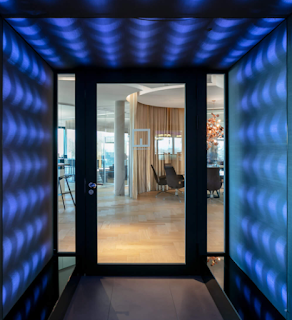Impacts Of Light On The Appearance And The Functionality Of Textile
Lately,
there has been a continuous debate in the textile business on how
light impacts the physical characteristics of a fabric. While this is
highly relevant to buyers when they evaluate their purchase decision
from the quality perspective, but at the same time, it is equally
essential that the home
or office lighting design fabric
exhibits the intended effects in its proposed environment. And, in
order to achieve this, the quantity of light, its intensity, angle
and reflection play a significant part in the presentation, as well
as how does the final product functions.
-
The volume of light: The amount of light in the field of viewing the fabric has a significant effect on its sensory perception. Low light surroundings will make the material seem rather dull and its patterns less distinguishable. On the contrary, a voluminous bright lighting source can make the fabric look more striking and designing more discernible.
Additionally,
if your place is susceptible to the bright lighting conditions, you
might need to rethink before buying light or white-hued fabrics since
these colours will do little to absorb intense rays. Here, a darker
shade can provide better eye strain coverage from glare. However, it
is essential to note that you are going to view fabric from below
with awnings or it is going to be back-lit most of the time— either
way, offering an entirely different perspective that you must take
into account before buying.
-
Light Quality: The light quality often points to the intensity of its undertones. Usually, these are termed as either cold or warm. Hot lighting has yellow undertones and offers warmer hues to the places it scours over. On the opposite, a cooler light intensity splashes the shades of blue on its immediate surroundings. While the lighting may vary based on several factors such as the time, climatic conditions and more, however, some geographic regions appear to be primarily warmer or cooler in their appearance. By picking the shades of the fabric that accentuates the quality of light in that zone, you may either equalise or influence the home or office lighting design in your surroundings.
Interestingly,
the psychological impacts of the light quality are also very potent—
yellowish colours can instantly create a perception of warmth while
the cooler undertones might make the residents experience cold. You
could use this characteristic to your advantage and develop a kind of
environment that you like.
-
Light Angle: The angle of light is the direction from which it falls onto the fabric or any other object. In most of the cases, the light source is fixed on top, or it may also emanate from behind. Hence, it is imperative to consider the light angle while purchasing the fabricated home or office lighting design product. For instance, while buying awnings, one of the most critical considerations is the underside of the fabric, since that is going to be the viewing angle.
-
Functionality: When you invest in a high-quality textile for lighting, ultra-violet rays damage might take years before it starts showing its damaging effects, however, UV protection is still a vital fabric functionality to consider before buying. Continual exposure won't only lead to the colour fading but may also weaken the structure of the textile over time.
In order to
better understand how durable a fabric selection is in terms of the
UV protection and other probable environmental damages, it is
imperative to touch base with your textile provider.
For
more information about the home or office lighting design options
and high-quality lighting textiles, visit us now.




Comments
Post a Comment